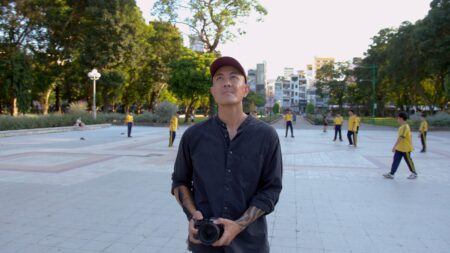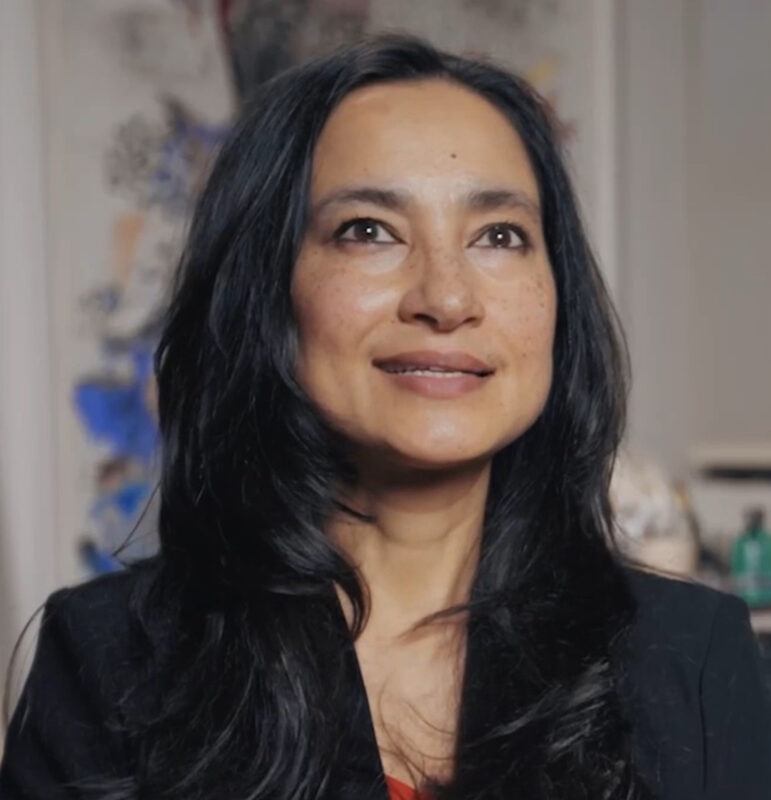Continue playing
(Time remaining: )
Play from beginning
Continue playing "{{ controller.videos[controller.getVideo(controller.currentVideo)].segmentParentTitle}}"
{{controller.videos[controller.getVideo(controller.currentVideo)].title}} has ended.
RAAAF and Shahzia Sikander at the 13th Istanbul Biennial
As a result of the tumultuous social climate, artists in the 13th Istanbul Biennial who designed public works were forced to reorient their works for indoor spaces, or in RAAAF’s case, create an entirely new piece. The art collective, RAAAF (Rietveld Architecture-Art-Affordances), explains to Shahzia Sikander that they originally designed a public installation for Taksim Square. In response to a protest, created the indoor light installation, Intensive Care, reflecting one’s breathing patterns during a crisis.
“The freedom of speech on Taksim is continually subject of debate. It’s like a monument of the secular state of Turkey,” RAAAF explains.
Closed captionsAvailable in English, German, Romanian, Italian, Japanese, Korean, Chinese, Italian
Through the Art21 Translation Project, multilingual audiences from around the globe can contribute translations, making Art21 films more accessible worldwide.
Interested in showing this film in an exhibition or public screening? To license this video please visit Licensing & Reproduction.
Established in the Netherlands in 2006, the design collective RAAAF (Rietveld Architecture-Art-Affordances) consists of the brothers Ronald and Erik Rietveld and Arna Mačkić. With backgrounds in architecture, design, and philosophy, the members of RAAAF produce context-specific works that imagine potential ways of living.
Shahzia Sikander specializes in Indian and Persian manuscript painting, a traditional, technique-driven style that Sikander imbued with a personal context and history, blending the Eastern focus on precision and methodology with a Western emphasis on creative, subjective expression. In doing so, Sikander transported manuscript painting into the realm of contemporary art. Expanding the manuscript painting to the wall, Sikander also creates murals and installations, using tissue-paper-like materials that allow for a more free-flowing style. Utilizing performance and various media and formats to investigate issues of border crossing, she seeks to subvert stereotypes of the East and, in particular, the Eastern Pakistani woman.


